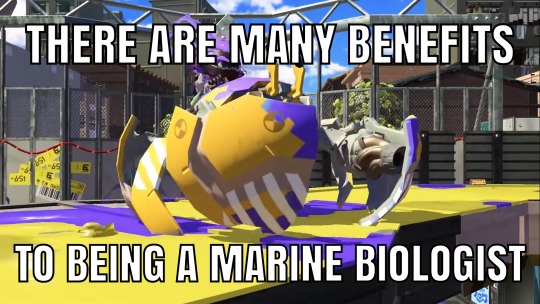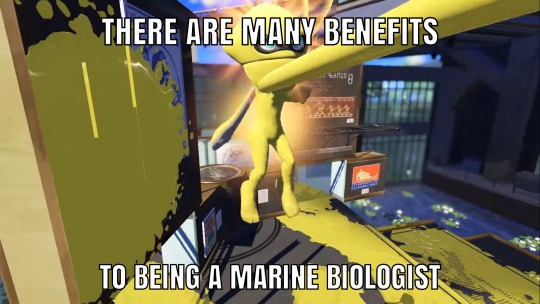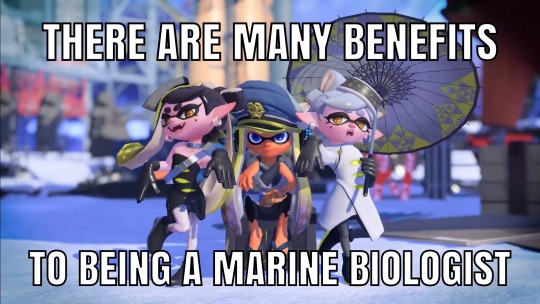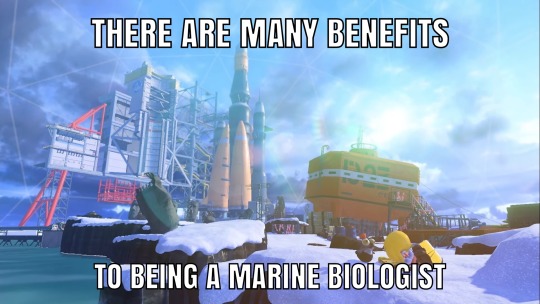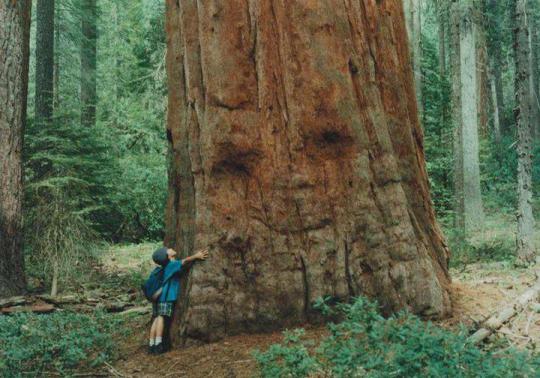hey there i'm voltimer! splatoon has gripped my soul forever. things you see on this acc may include: splatoon, ... (maybe pokemon and fe too)
Don't wanna be here? Send us removal request.
Text
Ordertune has been ripped
I've been hesitant to post this, but finally here is an entire rip of Ordertune.
Ripped using foobar2000 into FLAC, and converted into MP3 with ffmpeg.
FLAC: https://drive.google.com/file/d/13Jgdb6RPxaThVH2J3WIvKurhQeWQx76k/view?usp=drive_link
MP3: https://drive.google.com/file/d/1Al3TqKosA-BZ_gMhINpQKCVVjYjGMsoc/view?usp=drive_link
Hope y'all enjoy!
EDIT: I fixed the botched track listing, should be properly ordered now. Also added track artists; no album covers yet.
500 notes
·
View notes
Text

WAKE UP! WE NEED YOU BACK HERE!! WAKE UUUUP!!!
8 notes
·
View notes
Text
'The Magic of Johto's Level Curve'
(or, 'a leisurely analysis of the singleplayer balance of Pokemon GSC and HGSS')
The Johto games - especially HeartGold and SoulSilver - seem to have a very good reputation. Some often put the aforementioned HGSS into their top 3 or describe it as the core Pokemon experience. I personally agree with this sentiment and HGSS is either #2 or #1 depending on my mood (it usually competes with Black 2 and White 2).
Despite all its praise though, there seems to be an incredibly consistent point raised against it: the level curve. I see it described as unbalanced, janky, and generally bad.
There are two main problems people tend to cite. First is the level progression in Johto itself, with Gyms 5, 6, and 7 not exactly being a smooth progression upwards and then Team Rocket's Archer and the 8th Gym having a notable level spike compared to those last three. Wild Pokemon levels are also usually a lot lower than the major boss fights they are ahead of, making raising new 'mons harder and grinding for boss fights longer. The other problem is Kanto, whose problems can essentially be said to take Johto's levelling issues and ramp them up. The jump from fighting Blue to the Elite Four rematches and Red is also very significant.
What I'm not going to do here is refute that the above isn't true - these level scaling inconsistencies are certainly present. It's also very different to the vast majority of main series entries, whose level curves are more linear and gradual. Gens 5 and 7 even have a feature which multiplies exp gain based on how much lower or higher you are than the Pokemon you defeat which in a way acts like a rubber band around each game's level curve, ensuring you can catch up easily but not go too overlevelled either. Playing GSC and HGSS when the rest of those entries are like that is a bit jarring. Pokemon is so well-known for having quite a formulaic design across its main series and when compared to that formula with regards to level progression and the like, the Johto games do seem a bit off-colour.
What I am going to do though is try to explain why this so-called bad level curve is at the very least not actually that bad, or, if I can convince you well enough, that the Johto games actually have a unique and (what I call) magical singleplayer game design not properly replicated in any other entry. It goes to the core essence of Pokemon's theming, and it fits with the fact that Johto's narrative also happens to put the most focus on those themes than the rest of the series.
When I say the core essence of theming, I mean the very basics of every Pokemon adventure: you, the player, leave home to go on a journey around your region, meeting various people and overcoming various challenges along the way together with your partner Pokemon. Challenges you overcome are all thanks to the bonds you share with your partners and how you raise them with love and care. As you get older, this is the sort of thing in Pokemon that you probably end up taking for granted. It's typical "power of friendship" stuff, and most people will tend to come to conclude through learning about the game mechanics that this sort of thing is superficial and that stats are all that matter in the end. The more modern Pokemon games also have such a big focus on larger-than-life stories with big climaxes featuring the box Legendaries that it's easy to lose this basic level, down-to-earth narrative theming.
Johto is significant for not having any larger-than-life aspects overshadowing its core. Instead, the core takes centre stage. There is no real overarching story besides your adventure. Team Rocket's antics take a sub-plot role but in the end act as a foil to your story, being one of the more major obstacles you overcome. Catching Ho-oh or Lugia is no cataclysm either, but rather a reward for your achievements throughout the game and thanks to your good and pure heart - recognised by the Legendary in question. Moments throughout the game like how you deal with the situation at the Lake of Rage, or the Dragon's Den trial where you're asked questions to test your ideals as a trainer (which, of course, you pass with flying colours) all contribute to this core as well.
The way Professor Oak congratulates you after defeating Lance ties the knot perfectly on the main campaign:
"Ah, <player>! It's been a long while. You certainly look more impressive. Your conquest of the League is just fantastic! Your dedication, love, and trust for your Pokémon made this happen. Your Pokémon were outstanding, too. Because they believed in you as a Trainer, they persevered. Congratulations, <player>!"
These are just examples of the main story events, though,and Johto has a lot more than that. The region is filled with things to do beside the main campaign - Berries/Apricorns, Pokegear calls, the Ruins of Alph and other optional caves, the Bug Catching Contest, and (in HGSS) the Pokeathlon and Safari Zone, just to name a few of the more notable ones. Tama Hero's review of Pokemon GSC talks a lot about this and it's well-worth a watch even beyond the section describing the games' breadth of side content.
Tama Hero also touches upon the supposed level scaling issue, and her response to the complaints is that there is a "sprinkling" of opportunities for small bits of exp gain throughout the game which should help you stay on track in most cases, and where you can't match levels, you can outplay your opponent.
I certainly agree with the latter. It always feels entirely possible to beat bosses at a level deficit throughout Johto. The Johto League is one of the key cases where you'll probably end up at level disadvantage, but I've consistently been able to defeat it with a team of lv 40s on average (so nearly 10 levels behind Lance's peak), and I'm pretty certain that my not-even-10-year-old self did so as well, even though it took me many, many attempts. From various people I've talked to and bits of let's plays I've seen over the years, this seems to be the common experience too. I think only a minority of people have had to grind to match Lance's levels in order to beat him at all. Granted, it might take you a couple of tries at that level disadvantage (or a great couple of tries more, like little ol' me), but that's surely not an unreasonable expectation. The concept of getting stuck at a difficult stage in a game could be called a universal one, and I think most people agree that it's always pretty satisfying to finally surmount a challenge like that. This can even be said about other Pokemon games - Kanto, Hoenn and Sinnoh also all have large level spikes at the end. In fact, at least when it comes to the end of the maingame, I'd argue Hoenn and Sinnoh have a larger level spike than Johto, but they're not considered impossible or anything
Regardless, though: it's certainly possible to win difficult battles in Pokemon at a level disadvantage. Tama Hero argues that the strategy required to do so isn't something the game teaches you very well, but I think this is a tad pessimistic. In the end I think that most wins will just come down to understanding of more fundamental skills that you've probably learned through the course of the game naturally - using type matchups (gyms are all type themed), using moves with stat changes (the earlygame is full of moves like Growl and Tail Whip), using status moves (no doubt you're going to see the effects of Paralysis and Burns throughout the game at least), and apt use of items (bosses always use potions and often use held items). Players also have more control over the battle than the enemy, with the default Switch mode and a huge amount more items available. It's true that the games don't teach you the deeper, untold mechanics very well, but learning about those only unlock even more ways to succeed for the numbers-minded veterans.
On the topic of those deeper, untold mechanics I also want to talk about something which Tama Hero doesn't mention at all - Effort Values, or EVs. Most of you reading will probably know about these by now, but for those who don't, EVs are hidden values which can increase a Pokemon's raw stats by a certain amount based on the other Pokemon they defeat. They were present in a slightly different form in Gens 1 and 2 in the form of "stat exp" but the premise was the same: your Pokemon grow twofold when you defeat Pokemon, by gaining visible exp for levelling up and visibly gaining stats every time that exp bar fills, but also by gaining stats little by little every time they defeat any Pokemon. Your Pokemon's EVs weren't visible to you in-game until Gen 6 with the Super Training graphic, and numerically weren't until Gen 7 where you can press X on the Pokemon's stat screen to show what are called "base stats".
EV optimisation is crucial to competitive play because the stat boosts they give are quite significant. Competitive players will "min-max" spreads, putting as much as possible into 2 stats to maximise strengths and not wasting any on stats they aren't making use of. In maingame playthroughs, though, EVs will usually end up being a balanced spread because you'll invetivably be facing a variety of Pokemon with different EV yields throughout the game. EVs can also be increased with the Vitamin items (Protein, Calcium, etc.) which you find a handful of throughout the game (and can buy at a premium) and can be used to manually raise EVs, though only to a certain point.
In Gens 3 and onward, a Pokemon can have up to 252 EVs in 1 stat, and 510 in total. At Lv 100, 4 EVs in a stat grant 1 point extra to it. For the singleplayer campaign the conditions are a bit different, but if we assume as a standard that by the Elite Four your EV total is maxed out and you have an even spread, your stats will all be up to 10 points higher than they would be without EVs. In Gens 1 and 2, you can actually max out all of a Pokemon's stat exp values but you're unlikely to cap them all for a good while beyond the maingame so we can consider them about the same as in the later gens for this.
But why is this important?
Firstly, the difference EVs make in the above scenario account for what is usually about 5 levels' worth of stats. Depending on your exact distribution, it could be a couple more or less levels' worth in each stat but the bottom line is that they make your Pokemon's strength higher than it may seem based on level alone.
This means that the wild Pokemon grinding that is criticised for being too tedious in Johto as a result of low levels is also better than it seems because even when you don't level up, you're gaining EVs for every one of those you defeat. The stagnant levels in the midgame of Johto also contribute more to your Pokemon's growth than it may seem from the slow level gain. The Pokegear rematches which you gain access to after defeating Team Rocket before Gym 8 may also be a little infrequent, but they also very often give you Vitamins afterwards to add to all of this.
Secondly is what seems to be a fairly unknown fact: in-game trainers do not have any EV spreads. Thanks to the work of speedrunners, we have exact data of enemy trainers' Pokemon to show this. Trainers do have IV spreads based on their "AI level" (more 'advanced' AI levels will have up to 30 IVs across the board) but the difference near-perfect IVs will have on their Pokemon is not as great as the combination of random IV spreads and relatively balanced EV spreads yours.
That 10 level deficit vs Lance is suddenly more like 5 in practice. Some of his Pokemon also happen to have pretty high stats naturally in Gyarados and the Dragonites, and the level deficit will still be slightly present, but once we factor in strategy again, you can abuse their type weaknesses and make good use of items, status and whatever else have you to swing the odds in your favour.
The only way you can find out anything about EVs in Johto is from a NPC in Blackthorn City who gives your Pokemon the Effort Ribbon if they have reached their total of 510, and the only practical way for a player without the technical knowledge to have achieved this is to have spent time throughout the game doing lots of little bits of training - in other words, putting in the effort - to have incidentally capped their Pokemon's EV total. It's only fitting that you find this NPC towards the end of the Johto campaign because it's likely that by this point a couple of your team members will be eligible for the ribbon.
This finally ties back to the point of core theming. EVs are an invisible stat giving your Pokemon an extra edge over their in-game opponents, or, at worst, one closing a gap in strength between them, as a result of all of the time you've spent raising those Pokemon throughout the game. In other words, EVs are essentially the statistical representation of the "dedication, love, and trust" you have for your Pokemon which gets you through seemingly difficult challenges. Levels, then, are only a surface representation of your Pokemon's strength: they create the feeling of an uphill battle, but you can win against the odds by believing in yourself and your partners. It's probably exactly what you thought as the naive and uncynical child playing through a Pokemon game for the first time, and probably one of the ways you made such fond memories of it. In hindsight, this is definitely how it was for me. It is a sort of magic, really.
There is still a big Red elephant in the room, and I do think that the level gap between the end of the Kanto Gyms and Red is maybe too hard to go and beat immediately after even with the power of EVs and such, but Red is by all means a superboss and final challenge of the Johto games, and I don't think it's unreasonable to have to grind for a while to build up for and to finally be able to take his team of Lv 80s on. The same can be said about the Elite Four Rematches in this game and others, Steven in Emerald, or that one Barry fight in Platinum if you do decide to beat the E4 rematches 20 times to make his levels nearly match Red's. If you're setting out to fight a superboss like this, the grind is part of the prerequesites. It's definitely still possible to beat someone like Red with a 10 or even 20 level deficit if you play well, though. I admit, I haven't beaten Red in a long time, but I have beaten Emerald Steven with a ~15 level gap before. Tama Hero also said she has beaten Red with a team of level 50s in Crystal in the review.
I said before that the other games in the series haven't replicated this sort of thing as well. Gen 5 was the beginning of a marked shift away from this design, with its overarching story-driven style and a change to exp gain which would honestly be incompatible with the level curve in Johto. Gen 6, whilst returning to the exp system without level deficit multipliers, saw different means of statistical representations of the 'dedication, love and trust' trio in Pokemon Amie, which can break the game almost as much as the Exp Share when enough Affection is built up. Gen 7 brings back Gen 5's exp system whilst retaining the Exp Share and Affection systems, and actually ends up even diverging from the EV design which went before by having in-game trainers and Totem Pokemon with competitive, min-maxed EV spreads from as early as the Trainer's School. Whilst I am yet to play Let's Go and Sword and Shield, their Exp system with a 'permanent Exp Share' of sorts makes it a huge amount different and from what I've seen and heard, overlevelling is quite easy despite the game being designed around the feature. I really hope that Brilliant Diamond and Shining Pearl at least return to Gen 6's exp mechanics, or better, reunite us with the held-item version of the Exp Share which doesn't make me feel like I'm cheating whenever I use it.
Before I go too off-topic, though, I should probably return to the original thread of this post to make some concluding remarks. What can't be denied that the way GSC and HGSS are designed may not be for everyone. I know for sure that a lot of people prefer to be able to breeze through a Pokemon game at a brisk pace without many roadblocks, but as someone who in recent years has come to appreciate much slower-paced and immersive singleplayer Pokemon playthroughs, I can't help but love the way GSC and HGSS are designed in the way I've explained, or appreciate their unique identity amongst the rest of the series. Coming to think about this has also shed light on why I adored HeartGold as much as I did when I first played it way back 11 years ago. I poured hours and hours into the game, and as a result, its magical design put me under its spell.
_____________________________________________________________
Though I linked to the references I did use when they appeared, here they are again. Do check them out if they're of interest to you!
Tama Hero's GSC review: https://www.youtube.com/watch?v=FgtMVKP2T6Y
speedrun.com trainer data for HGSS: https://www.speedrun.com/pkmnhgss/guide/k2zij
speedrun.com trainer data for SuMo: https://www.speedrun.com/pkmnsunmoon/guide/d2683
Tama Hero (YT) is one of the few people I know who actually makes longer-form Pokemon analysis content besides Aleczandxr (also YT), who whilst not being a 'PokeTuber' has made some brilliant analyses of storytelling through setting in Sinnoh, Hoenn, Johto, and just recently, Unova. I did not refer to them here but I can highly recommend their content, at least.
Thank you very much for reading to the very bottom here. This is my first time writing something like this and I appreciate it.
#voltimer longpost#pokemon#gsc#gen 2#gold and silver#crystal#gen 4#heartgold and soulsilver#analysis#hgss
23 notes
·
View notes
Note
Why move to twitter at this point? Tumblr is probably the better option now lol
I just made an account a year ago, tumblr is objectively more fun and endearing and if tumblr just expanded their sharing options more it would be the best
920 notes
·
View notes
Text
UPDATES ON THE JOSH FIGHT!
According to Fawcette, the main streamer of the event, the amount of Joshes who turned up is about 75-100 Joshes. Any streams are really laggy, but for those who couldn’t tune in here are some pics:

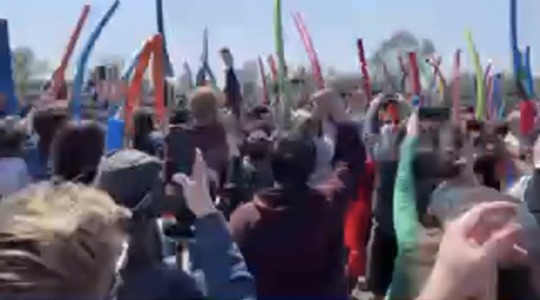
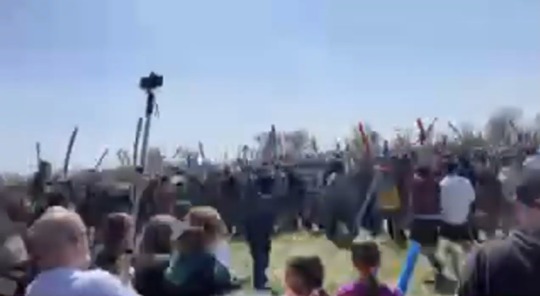





These were taken from a laggy stream, but as you can see the turnout is massive. The crowd is estimated to be at least 200 people.
The latest winner from the series of Josh fights is “Tiny Josh”, a four year old child who was inducted into the battle. As of right now, the bearer for the title of “The One True Josh” is the original Josh Swain.
Updates will continue if the stream stops lagging.
93K notes
·
View notes
Text
The 3DS is 10 years old!
Look at these cool-ass colours we never got :(


8 notes
·
View notes
Photo

Reyson did not break his hand because he’s Just That Weak. He broke his hand because he doesn’t know how to throw a punch. Why have none of the hawks or the billions of twunks around him ever taught him how to lay a man out
302 notes
·
View notes


